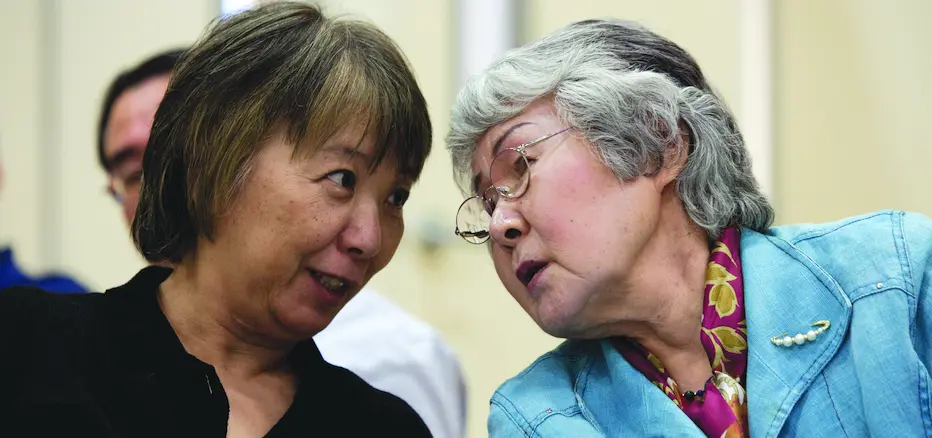Sempai-Kohai: Seniority Rules

Lydia* and her husband had spent months working on a plan to do outreach in their community. There had been a positive response from the members of their tiny church plant. The fujinkai (ladies’ group) was meeting to add the final changes. Partway through the meeting, Lydia became alarmed as Mrs. Sato, the oldest Christian, made it clear she didn’t agree with these plans. Because of her influence, most of the women in the group changed their minds, and the plans were put off indefinitely. After all their hard work, Lydia was confused and disappointed. Why did her opinion count for so little and Mrs. Sato’s count for so much?
Japanese culture takes vertical relationships seriously. The most important in this hierarchal system is the senpai-kohai relationship. These vertical relationships are essential to and dominate Japanese culture.
Senpai refers to someone who is senior (at work or school), a superior or elder. Kohai is someone who is a junior (at work or school) or younger. These relationships start early on when one enters junior high school and carry over into the workplace. The senpai is treated with respect, always greeted with a bow and addressed in polite language. The role of the kohai is to obey and serve. The role of senpai is to advise and protect.1
The senpai-kohai relationship in Japanese culture has been heavily influence by three things.
Confucianism
Confucianism came from China between the 6th and 9th centuries. The principles of Confucianism that teach loyalty—as it relates to “filial piety, respect for one’s elders, and reverence for one’s ancestors”—fit well with the Japanese concept of loyalty to one’s master or father and, by extension, to the emperor.2
The family (ie)
Here Confucianism again has a heavy influence, with its strict and formal social norms. There are two especially important positions in the family:
- The father, who is the head of the family and has complete authority over the family. He is given respect and obedience.
- The eldest son, who receives all the family inheritance.
This concept fits well in the historical setting of the shogun with his subservience and obedience to the emperor.3
Japanese civil law
Civil law in 1898 gave legal authority to the father as head of the house and the inheritance to the eldest son. And though these were eventually overturned legally, they still influence and permeate Japanese culture.4
Sempai-kohai is perhaps one of the few Japanese cultural interactions that transfers well into the Japanese church. It is natural for Japanese Christians to fit into the church’s hierarchy, and be comfortable “taking orders” from the pastor and older Christians. This system is similar to the Bible’s teaching on mentoring and discipleship. The only downside is that there are also abuses that creep into these relationships, as shown in the above example with our ladies’ group. But thankfully, many have zeroed in on the positives in these relationships, and grown strong, healthy churches. 
* Fictitious names are used in this illustration.
1. Birgir Bachman Konraosson, Invisible Japan: Are old Japanese values hindering further internationalization?, 2012:18-20, http://skemman.is/stream/get/1946/10635/26474/1/Birgir_Konráðsson.pdf.
2. Roger J. Davies and Osamu Ikeno, The Japanese Mind: Understanding Contemporary Japanese Culture (Tokyo:Tuttle, 2002), 187-274.
3. Davies and Ikeno, The Japanese Mind, 187-274.
4. Ibid.
Photo above contributed by OMFphoto.org
